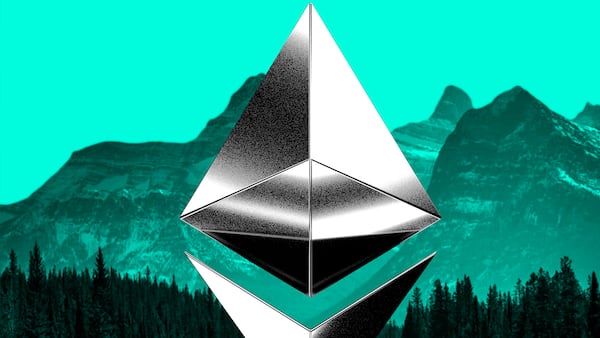- Ethereum mainnet use isn't increasing with Ether's price like it used to.
- Over the past month, the network has created more tokens than it has burned from transaction fees.
When Ethereum’s Ether token hit an all-time high of $3,800 in May 2021, the increased activity on the chain sent transaction fees soaring as users piled in.
They became accustomed to spending upwards of $100 just to trade tokens onchain. But many didn’t care — there was money to be made.
Fast-forward to 2024, and Ethereum is revisiting those heady prices for the first time in over two years. But this time’s different.
Despite prices jumping from the recent Ethereum spot ETF U-turn, transaction fees on the top smart contract network remain low — only slightly higher than they were during the depth of the 2022 crypto winter.
It’s a sign that demand for transactions on Ethereum isn’t what it used to be.
So, what gives?
Increases in transaction efficiency, coupled with an exodus of activity to Ethereum’s lower-cost layer 2 networks, like Base and Arbitrum, have helped temper demand and make Ethereum cheaper to use.
While this is great for Ethereum users, there are downsides.
With transaction fees on Ethereum mainnet plummeting, the network is failing to burn — crypto speak for destroy — enough tokens to make the Ether supply deflationary.
Critically, if fees stay low, it could throw the network’s economic model into question.
Ethereum becomes too efficient?
When the Ethereum network destroys more tokens from transaction fees than those it rewards to validators for processing those transactions, the total supply of Ether shrinks and becomes deflationary.
This situation is favourable for the network as it rewards those who help run the network without inflating the supply of Ether.
But if users don’t spend enough Ether on transactions, the Ether supply will inflate indefinitely, breaking the network’s economic model.
Persistent inflation, while unlikely, would devalue Ether and make it less appealing for users to lock up in validators to secure the network. After all, an asset that keeps printing units is better spent than saved.
So far, the Ether supply has shrunk in aggregate since Ethereum slashed issuance of new Ether with its September 2022 Merge upgrade.
But that’s changing. Over the past month, the lack of Ethereum activity meant the network added over 50,000 Ether, worth $190 million.
If activity and fees spent on Ethereum don’t pick back up, the supply of Ether will inflate by 0.5% — or $2.2 billion — over the coming year.
Where are the fees going?
In recent years, many Ethereum users have switched over to so-called layer 2 networks.
Layer 2s like Arbitrum, Optimism and Base offer Ethereum compatibility, faster transactions, and lower costs, while still relying on the main Ethereum network for security.
Activity has exploded. Since the start of 2024, activity and trading volume on layer 2s have soared to all-time highs.
These layer 2s still pay transaction fees on the main Ethereum network, but only a fraction of what it would cost had everyone using the layer 2 sent transactions on the Ethereum mainnet.
What’s more, Ethereum’s March Dencun upgrade cut the already low cost of posting layer 2 transaction data, further decreasing mainnet demand.
Elsewhere, developers are improving the cost that governs Ethereum transactions. The result is reduced gas costs, meaning users pay less in fees for the same kinds of transactions.
With Ethereum more efficient than ever, and a thriving layer-2 ecosystem, how will the network avoid economic turmoil?
Tim Craig is DL News’ Edinburgh-based DeFi Correspondent. Reach out with tips at tim@dlnews.com.







